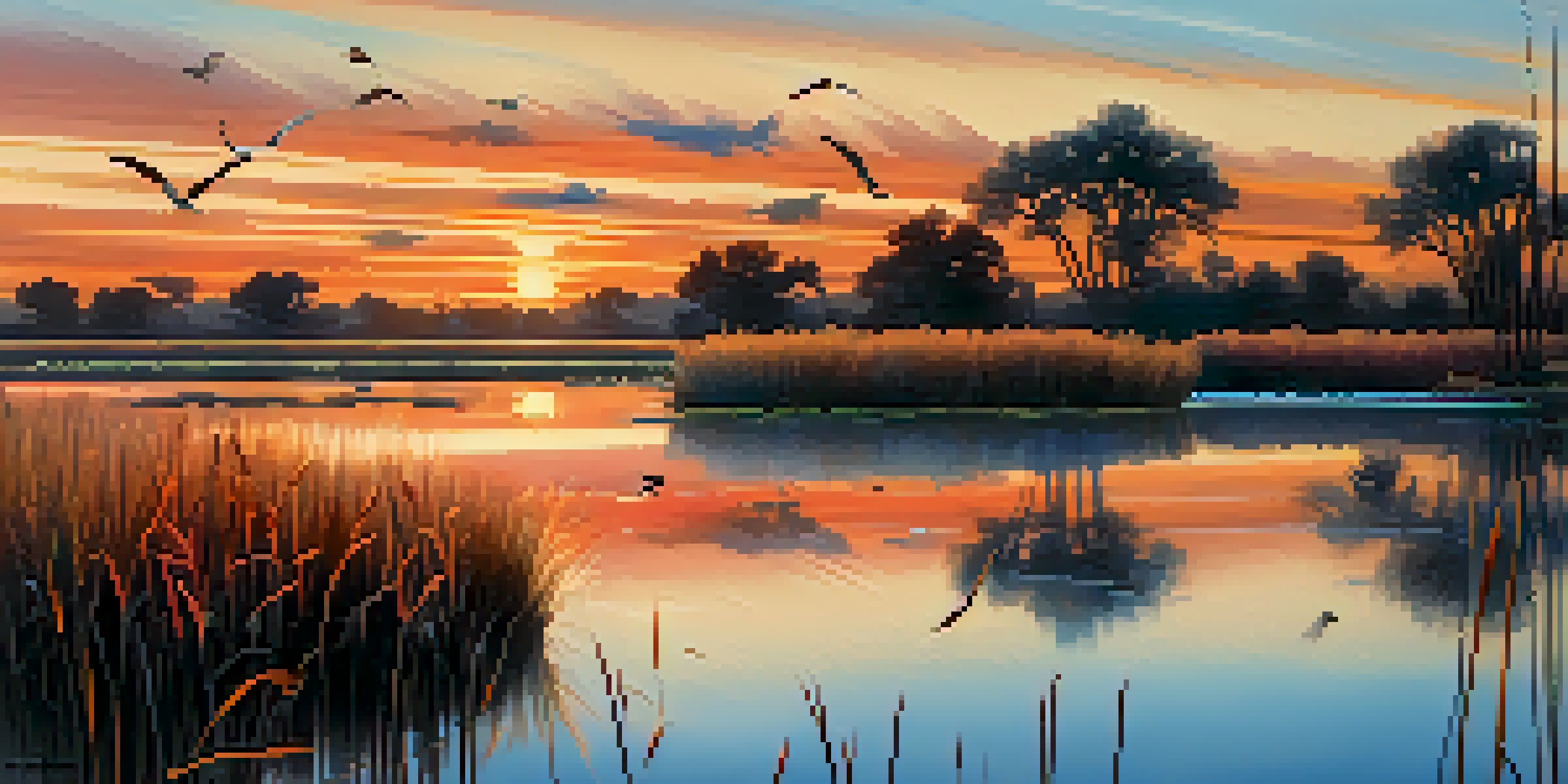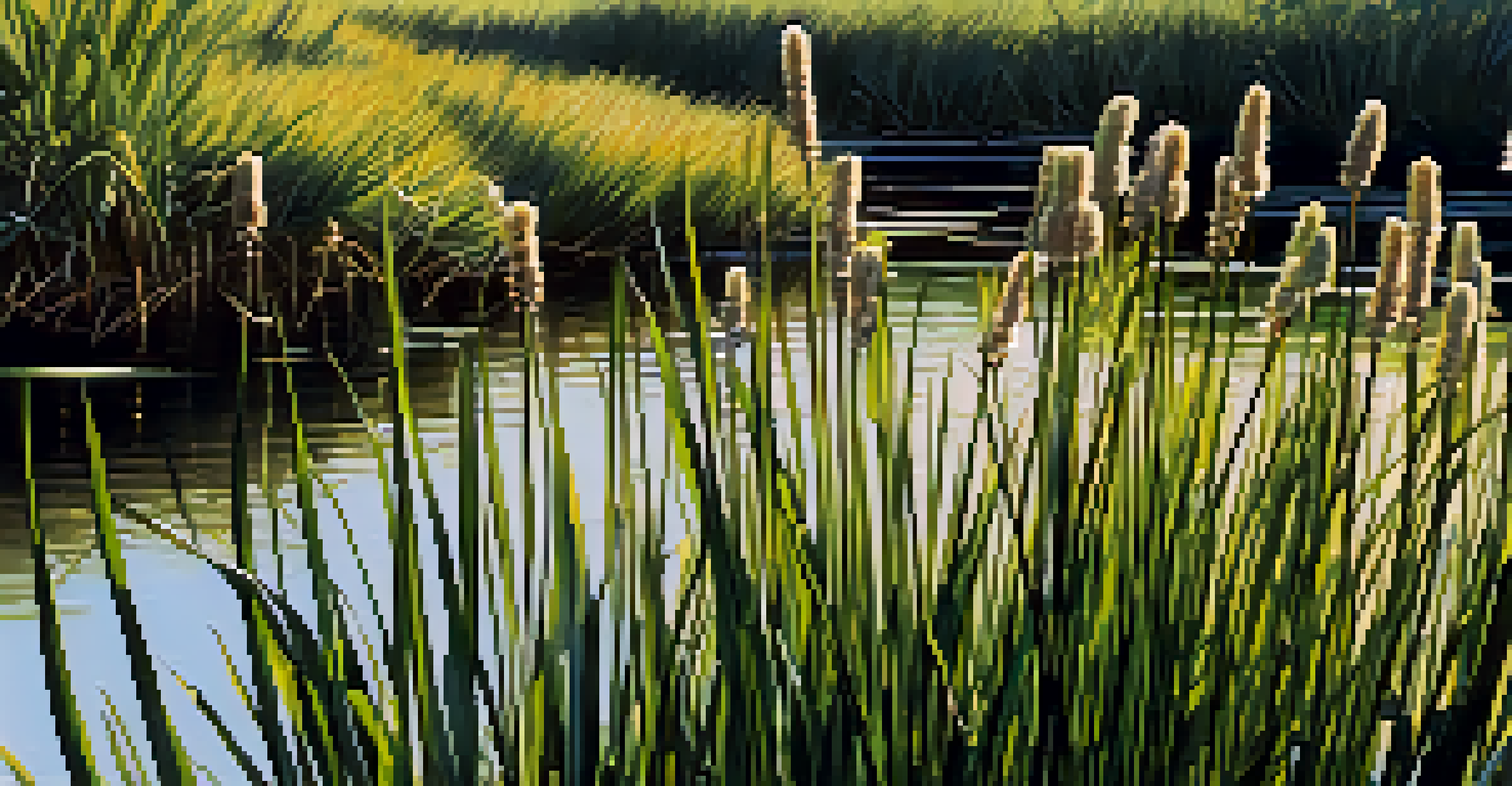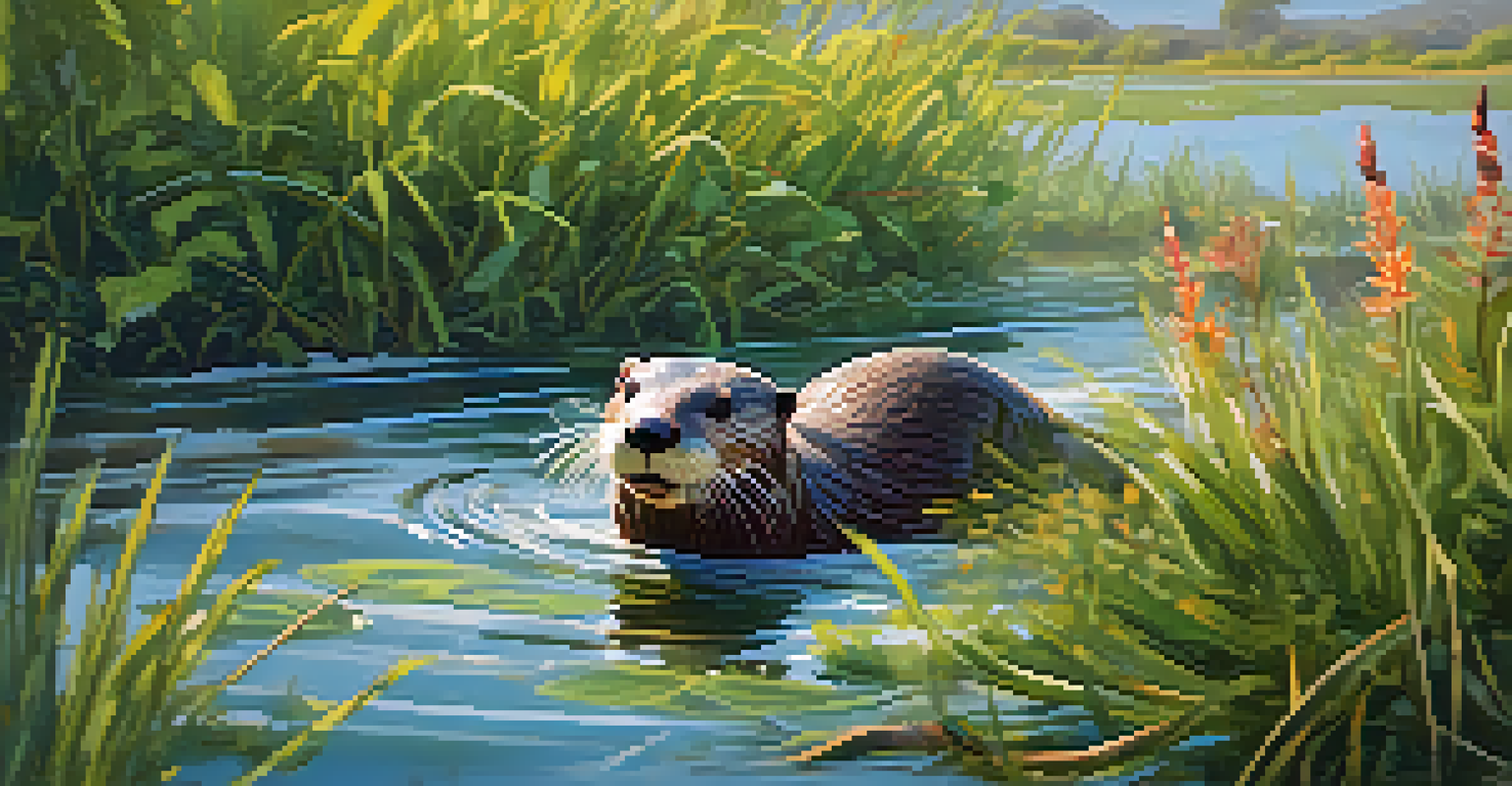Wetlands of California: A Look at Endemic Flora and Fauna

The Importance of California's Wetlands
California's wetlands are vital ecosystems that serve numerous functions, from water filtration to flood control. These areas are not just swamps; they are rich habitats teeming with life. They play a crucial role in supporting biodiversity, offering a home to countless species of plants and animals.
Wetlands are among the most productive ecosystems in the world, providing essential services that support life on Earth.
Wetlands also act as natural sponges, absorbing excess rainwater during storms and releasing it slowly, helping to prevent floods. This ability to manage water makes them essential in a state that frequently faces droughts and wildfires. In addition, they provide recreational opportunities, contributing to local economies through tourism and outdoor activities.
Despite their importance, California's wetlands have faced significant threats due to urban development and agriculture. Understanding the unique flora and fauna that inhabit these areas is key to appreciating their ecological value and advocating for their preservation.
Unique Flora of California's Wetlands
The flora found in California's wetlands is diverse and uniquely adapted to wet conditions. Common plant species include cattails, bulrushes, and various types of sedges, which thrive in saturated soil. These plants not only stabilize the soil but also provide food and shelter for wildlife.

One particularly interesting plant is the California bulrush, which can grow up to 10 feet tall and is crucial for nesting birds. Its dense stands create a safe haven for various bird species, while also absorbing nutrients from the water. Additionally, the wetland plants play a role in filtering pollutants, contributing to cleaner water systems.
Wetlands Support Biodiversity
California's wetlands are crucial habitats that support a diverse range of flora and fauna, playing a key role in maintaining ecological balance.
Among the endemic plants, the Marsh Sandwort is noteworthy. This delicate flowering plant is adapted to saline environments, showcasing the resilience of wetland flora. By understanding these plants, we can appreciate the intricate web of life they support.
Endemic Fauna of Wetlands: Birds
Birds are perhaps the most visible inhabitants of California's wetlands, with many species relying on these habitats for breeding and feeding. The California Black Rail, a secretive bird, is one such example, thriving in dense marsh vegetation. Its presence indicates a healthy wetland ecosystem.
The preservation of wetlands is crucial not only for the wildlife that inhabit them but also for the health of our planet.
Another notable bird is the American Avocet, easily recognized by its long legs and distinctive upturned bill. These birds are often seen wading through shallow waters, searching for food. Their striking appearance draws birdwatchers and nature enthusiasts alike, highlighting the wetlands' role in avian conservation.
Wetlands also serve as critical stopover points for migratory birds along the Pacific Flyway. These areas provide essential rest and nourishment for countless species during their long journeys, underscoring the wetlands' importance beyond local ecosystems.
Aquatic Life: Fish and Amphibians
California's wetlands are home to an array of aquatic species, including fish and amphibians. Native fish like the California Roach and the Delta Smelt are integral to the food web, supporting both predators and other aquatic life. However, many of these species are threatened due to habitat loss and pollution.
Amphibians, such as the California Red-Legged Frog, are also found in these ecosystems. This species is notable not just for its vibrant color but also for its role in controlling insect populations. Unfortunately, the Red-Legged Frog has seen its numbers decline due to habitat destruction, making conservation efforts critical.
Threats to Wetland Ecosystems
Urban development, pollution, and climate change pose significant risks to California's wetlands, threatening the species that rely on these vital ecosystems.
The presence of these aquatic species highlights the wetlands' role as a nursery ground for young fish and a breeding habitat for amphibians. Protecting these environments ensures the survival of these remarkable creatures.
Mammals of California's Wetlands
Wetlands are not only home to birds and aquatic life but also support a variety of mammals. Species such as the California Marshmallow Mouse and the River Otter rely on these habitats for food and shelter. The presence of these mammals indicates a healthy ecosystem that is able to support diverse life forms.
The River Otter, in particular, is a charismatic inhabitant of California's wetlands, often seen playing in the water or foraging for fish. Their playful nature and social behavior make them a favorite among wildlife watchers. Additionally, otters play a role in maintaining fish populations, showcasing the interconnectedness of wetland life.
As urban development encroaches on these habitats, many mammal species face challenges to their survival. Protecting wetlands helps preserve the delicate balance of these ecosystems, ensuring that diverse wildlife continues to thrive.
Threats to California's Wetlands
Despite their beauty and ecological importance, California's wetlands face numerous threats. Urban development, agriculture, and climate change have led to the draining and degradation of these vital areas. This loss not only impacts the species that depend on wetlands but also the overall health of the environment.
Pollution is another significant threat, as runoff from agricultural and urban areas introduces harmful substances into wetland ecosystems. These pollutants can disrupt the delicate balance of life, affecting both plant and animal species. Furthermore, invasive species can outcompete native flora and fauna, leading to further declines in biodiversity.
Conservation is Essential
Various conservation efforts are underway to restore and protect California's wetlands, highlighting the importance of community involvement and education.
Conservation efforts are crucial to mitigate these threats and protect California's wetlands. By raising awareness and supporting restoration projects, we can help ensure that these ecosystems continue to thrive for generations to come.
Conservation Efforts for Wetland Protection
Recognizing the importance of wetlands has led to various conservation initiatives across California. Organizations and government agencies are working together to restore degraded wetlands and protect existing habitats. These efforts include habitat restoration projects that aim to bring back native plants and improve water quality.
Community involvement is also key to these conservation efforts. Local residents and volunteers often participate in clean-up events, planting native species, and monitoring wildlife populations. This grassroots involvement fosters a sense of stewardship and connection to the land, ensuring that wetlands remain a priority.

Education plays a crucial role as well, with programs designed to teach the public about the value of wetlands. By raising awareness about the unique flora and fauna that inhabit these ecosystems, we can inspire action and support for their protection. Together, we can help preserve California's wetlands for future generations.